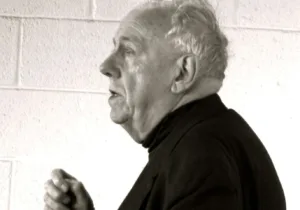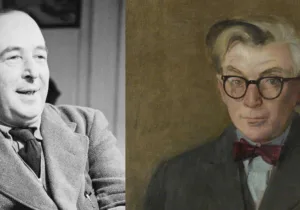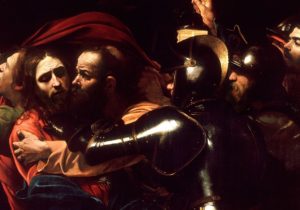On the Death of Queen Elizabeth II
The Queen is dead, long live the King! Or to put it in more personal terms, Queen Elizabeth II has died and our prayers are with her son, now King Charles III, her children, grandchildren, great-grandchildren, and her entire family. As Americans, it is right to say that our prayers are with all the British people and the Commonwealth of Nations. Queen Elizabeth was a stalwart for decency, compassion, freedom, duty, and the Christian faith itself throughout her 70-year reign. Her Christian commitments were never in doubt. In one of the many times that she referenced her faith, one of the most poignant came in 2000 when she said, “For me the teachings of Christ and my own personal accountability before God provide a framework in which I try to lead my life.” She remained faithful to the end.
Elizabeth Alexandra Mary Windsor was born in Mayfair, in central London, on April 21, 1926, the first of two daughters to Albert, then Duke of York and his wife, Elizabeth Bowes-Lyon. Her younger sister, Margaret Rose, was born in August of 1930. Prince Albert, as the second son of King George V, was never intended to accede to the throne and Elizabeth would later look back on her early childhood as a particularly happy period. The six-year-old princess once told her riding instructor that when she grew up she wanted to be a “country lady with lots of horses and dogs.” The prince would refer to “us four,” the happy family before the limelight.
But this tranquility would come to an end when Albert’s older brother, David, or Edward VIII refused to end his relationship with Wallis Simpson, a twice divorced American socialite who set him at odds with the values of the Church of England, thus creating what came to be known as the Abdication Crisis of 1936. Americans have a penchant for making a mess once we’re allowed into royal households. The spare became king and changed Elizabeth’s life forever.
King George and Queen Elizabeth and the two princesses were beloved of the British people, especially after the King and Queen’s insistence that they stay in London during World War II, lifting up the spirits of the people even as bombs fell across London and the British Isles. The princesses spent much of the war at Windsor, a place that would become very dear to Elizabeth as Queen. From Windsor, the young princesses would use radio communication to encourage the nation, particularly its children. One of the happy moments that the Queen later recalled was being allowed, with her sister, to anonymously join the throngs on The Mall in London celebrating the end of the war in Europe. She said, “I remember lines of unknown people linking arms and walking down Whitehall, all of us just swept along on a tide of happiness and relief.” But the toll of the King’s responsibilities weighed heavily on him and on his health.
In the immediate aftermath of the war, though, Elizabeth’s story is a particularly happy one as in 1944 at least it appears that she was in love. She and Philip had met previously, but it’s toward the end of the war and in its aftermath that the love story of Elizabeth and Philip comes to the fore. They married in Westminster Abbey on November 20th, 1947 and were married for 73 years at the time of his death in 2021. In 1947 she also made her now-famous speech to the Commonwealth from Cape Town when she said, “I declare before you that my whole life, whether it be long or short, shall be devoted to your service, and the service of our great imperial family to which we all belong.”
The royal couple welcomed the first of their four children, Charles, on November 14, 1948 at Buckingham Palace. Anne followed in 1950, Andrew in 1960, and finally Edward in 1964. Elizabeth was the first reigning monarch to give birth since Victoria. And, of course, the family was blessed with many pets throughout the years, particularly corgis.
One of the most poignant pictures of Elizabeth’s reign is perhaps the photograph of the three queens, Elizabeth, the Queen with Elizabeth, the Queen Mother, and Queen Mary, mother of King George, clad in black awaiting the arrival of the King’s body outside of Westminster Hall. The death of Elizabeth’s father was a pivotal moment for the Queen. On the anniversary of her accession each year she remarked that the day brought sadness as it marked not only her accession but also the death of her beloved father.
But Elizabeth’s sense of duty and Christian commitments propelled her onward to reign in a Britain still coming out of the challenges of the war and its aftermath. Her coronation was an event to celebrate. The coronation of any monarch is a profound moment and Elizabeth’s coronation in 1953 was no less spectacular, in particular because it was the first ever-broadcast on television. The Christian commitments of Elizabeth were made very clear in the liturgy that day particularly in the anointing and prayers for the Holy Spirit to sanctify the new queen, but even as she promised to “maintain the Laws of God and the true profession of the Gospel.” That day, the Archbishop of Canterbury spoke these words while handing the queen the Bible: “Our gracious Queen: to keep your Majesty ever mindful of the law and the Gospel of God as the Rule for the whole life and government of Christian Princes, we present you with this Book, the most valuable thing that this world affords.” After which the Moderator of the Church of Scotland continued by saying: “Here is Wisdom; This is the royal Law; These are the lively Oracles of God.” The profoundly Christian nature of the British monarchy was on full display and it was something that Elizabeth took to heart. It was upon this foundation that she acted as a gracious sovereign.
Her reign, however, would see dramatic changes not only in British society but also in the British Empire itself as it transitioned into a Commonwealth, a project that the Queen took great interest in and in which she spent a considerable amount of time. Elizabeth wanted to maintain the ties that had been created around the world and the project has proven a success because of her efforts to bring a new vision to a post-imperial Britain. The Britain of 1953 and today is the same and very different. Sadly, the decline of Christian adherence in Britain has created a secularized society often unknowingly haunted by its own heritage. Thankfully, a faithful remnant remains, an opportunity for all of Britain to find its way again.
During the Queen’s reign she saw the coming and going of 15 different Prime Ministers and 13 U.S. Presidents. She saw the end of the Cold War, the rise of the War on Terror, and massive shifts in British politics from post-war socialist projects to Thatcherism and everything in between.
The Royals also let the public into their lives in unprecedented ways, including a documentary film by the BBC about their every day lives in the 1960s. Critics were concerned that they were shedding the mystery of monarchy, but that didn’t take place. In 1972, on the occasion of their 25th anniversary the Queen, who rarely spoke so openly said, “If I am asked what I think about family life after 25 years of marriage, I can answer with equal simplicity and conviction, I am for it.” By 1977 with the first of Elizabeth’s jubilees the monarchy was on solid footing, particularly due to the continued efforts of the Royal Family to reach out to everyday Britons.
Extensive travel was a part of the Queen’s life since before she was crowned. At the time of her death, she had visited 117 different countries. In these travels whether in Commonwealth countries or in those with no historic British connection she sought to engender good will and admiration for freedom and duty. In 1991 she became the first monarch to address a joint session of the U.S. Congress. One of the notable “firsts” of the day was the fact that she was the first person since 1837 who was allowed to wear a hat in the U.S. House, that day a peach-colored one. She, being 5’4” and with a noted sense of humor, began her remarks with the words “I do hope that you can see me today.”
Not everything in her life was easy. The difficulties faced by her children were distinctly difficult for her. The year 1992 was especially hard. In a speech in London after the fire at Windsor Castle and the dissolution of three of her children’s marriages that year she said:
“1992 is not a year on which I shall look back with undiluted pleasure. In the words of one of my more sympathetic correspondents, it has turned out to be an ‘annus horribilis.’” The death of Diana, Princess of Wales, added further challenges. In 2002, she lost her sister, Princess Margaret and also her mother, the then Queen Mother, a particularly difficult blow. But she continued on – duty, faith, and family at the heart of her mission.
She celebrated her Diamond Jubilee in 2012 with 60 years on the throne. In her Platinum Jubilee an unprecedented 70 years on the British throne, she amazed the crowds, both in Britain and around the world, with her dedication and even her humor. If you want to see something of her sense of humor, look for her cameo appearance with Paddington Bear. You won’t be disappointed. But even more so, the Jubilee reminded everyone of her dedication to duty, to faith, and to family. Seventy years is a long time to be a pillar of civilization, and yet that’s exactly what she was.
The Queen will be buried with Philip, her mother and father, and her sister, Margaret, in a side chapel in St. George’s, Windsor. She won’t be too far from the Royal Vault, nor from Henry VIII and even Charles I, but she will be with her beloved family, the “us four” and Philip, together again, awaiting the resurrection of the dead.
With her passing, Britain and the Western world itself needs to be reminded of the values and faith that she held so dear and that shaped who she was. As much of Western Europe has lost its faith, Queen Elizabeth held fast and did not hide her Christian commitments. She embraced all and also remained firm in her convictions. Hopefully, in looking at her long reign and the grace with which she carried out her duties, we too may see that her strength came from the values that she embodied throughout her long life and reign, values of family, duty, and faith. And if we want to be anything like her, we have every opportunity to follow the same Christ that she did, in whose arms she is now at rest.






 Sponsor a student for Christianity & National Security 2024
Sponsor a student for Christianity & National Security 2024